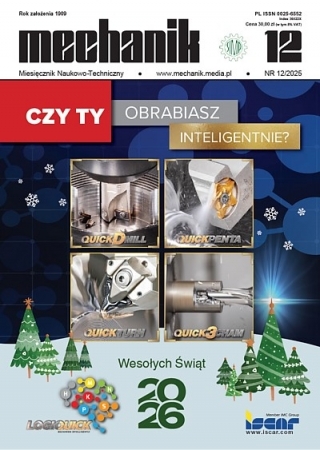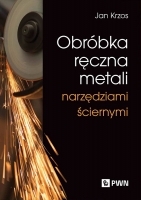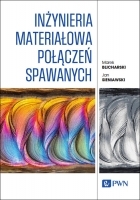Metodyka unikania drgań samowzbudnych bazująca na obróbce wirtualnej *
Self-excited vibrations avoidance methodology in non-linear numerical simulation environment
Mechanik nr 10/2016 - X Szkoła Obróbki Skrawaniem, XXXIX Naukowa Szkoła Obróbki Ściernej
STRESZCZENIE: Drgania samowzbudne są jednym z najważniejszych ograniczeń wydajności obróbki i jakości wyrobu gotowego. Dobór prędkości obrotowych pozwala na ograniczenie tych drgań poprzez zakłócenie efektu regeneracji śladu. Testowanie i dobór właściwych parametrów może być znacznie ułatwione dzięki obróbce wirtualnej.
SŁOWA KLUCZOWE: drgania samowzbudne, symulacja numeryczna, wirtualna obróbka
ABSTRACT: A self-excited vibrations (chatter) are one of the most important limitation in machining performance and quality of finished parts. Selection of stable spindle speed can suppress self-excited vibrations occurrence, by disrupting regenerative effect. These technic can be tested during process planning via virtual machining.
KEYWORDS: self-excited vibration, numerical simulation, virtual machining
BIBLIOGRAFIA / BIBLIOGRAPHY:
- Budak E., Tunc L.T. “Identification and modeling of process damping in turning and milling using a new approach”. CIRP Annals. 59 (2010): pp. 403÷408.
- Mahdi E. “Chatter stability of turning and milling with process damping”. PhD thesis, The University of British Columbia, Vancouver, 2010.
- Altintas Y., Weck M. “Chatter stability of metal cutting and grinding”. CIRP Annals – Manufacturing Technology. 53/2 (2004): pp. 619÷642.
- Lin S.-Y., Chen C.-K. “Construction of a dynamic cutting force model for oblique cutting”. Proc. IMechE 224 Part B: J. Engineering Manufacture. 224, No. 3 (2010): pp. 361÷372.
- Bąk P.A., Jemielniak K. “Numerical simulation of self-excited vibrations under variable cutting conditions”. Journal of Machine Engineering. 15.1 (2015): pp. 36÷45.
- Altintas Y., Eynian M., Onozuka H. “Identification dynamic force coefficients and chatter stability with process damping”. CIRP Annals. 57 (2008): pp. 371÷374.
- Bąk P.A., Jemielniak K. “Automatic experimental modal analysis of milling machine tool spindles”. Proceedings of the Institution of Mechanical Engineers, Part B: Journal of Engineering Manufacture. (2016): 0954405415623485.
- Smith S., Tlusty J. “Stabilizing chatter by automatic spindle speed regulation”. CIRP Annals-Manufacturing Technology. 41.1 (1992): pp. 433÷436.
- Delio T., Tlusty J., Smith S. “Use of audio signals for chatter detection and control”. Journal of engineering for industry. 114.2 (1992): pp. 146÷157.
- Bediaga I. et al. “An automatic spindle speed selection strategy to obtain stability in high-speed milling”. International Journal of Machine Tools and Manufacture. 49.5 (2009): pp. 384÷394.
- Altintas Y., Budak E. „Analytical Prediction of Stability Lobes in Milling”. University of British Columbia, Vancouver, BC, Canada, Annals of CIRP. Vol. 44, 1 (1995).





















